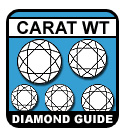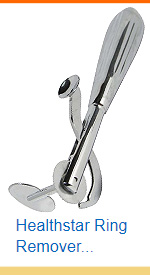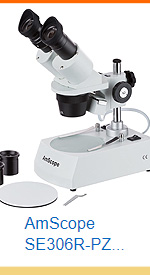THE 4 C’S OF DIAMONDS
LEARN ALL ABOUT THE 4C'S OF DIAMOND GRADING
This post contains affiliate links. If you use these links to buy something I may earn a commission. Thanks! As an Amazon Associate I also earn from qualifying purchases.

The 4C’s of diamonds was devised by GIA (Gemological Institute of America) way back in 1949 to help jewelers and the diamond industry gain some consistency over diamond grading standards.
The 4C’s are 4 main characteristics:
Cut, Color, Clarity and Carat Weight
Up until 1949, grading diamonds was questionable and misleading, with terms like “blue white” that referred to diamonds that were “colorless“, instead of what they really were, diamonds that had a blue fluorescence to them. Customers today still ask about buying “blue white” diamonds, so this wrongly used term lives on.
As you can see, strong regulations in diamond grading across America was needed. GIA devised the systems that are used today in just about all jewelry store nationwide. When people talk about the 4C’s, they are talking about GIA’s rules and regulations. These standards help jewelers define, grade, price, buy and sell diamonds invariably.
The 4C’s also help the consumer understand why two similar looking diamonds can be thousands of dollars different.
So let’s take a quick look at the 4C’s of diamonds, and then we’ll talk about each and every one…

Diamond Cut:
The cut of a diamond refers to two main components: The physical shape of the stone (like round, square, oval, rectangle…), and the proportions, angles, facets and symmetry of the stone.
Most jewelry stores will pass off cut as nothing more than shape, but don’t accept it. Learn cut! It affects great things like light, beauty and price.
The better the diamond cut, the better the brilliance, sparkle and fire is in the diamond. Diamonds can either be narrow and flat (spread stones), fat and lumpy (deep stones), or cut more towards ideal proportions. Ideal is better since it gives you a good mixture of both white flashes of light and colored flashes of light. Ideal is a cut above the rest.
Diamond Color:
Diamond color is the actual body tone of the stone (not the colors or flashes of light emitted from the stone).
Diamonds can come in all different colors of the rainbow (like blue, yellow, green, pink…), but white is the most common color and the most preferred.
The funny thing is, most diamonds are not white. They are more off-white or even yellow in Hue. But most mountings and rings hide the color of a diamond well, that is, until you compare the stones side by side (it’s easier to compare diamonds when they are loose). Comparing a pure white diamond up against a diamond with a yellow hue will really open your eyes. That’s when you’ll really see the difference. Pure white diamonds are breathtaking!
The whiter the stone, the better the diamond color.
Diamond Clarity:
Diamond clarity refers to the presence or lack of inclusions or flaws in a diamond (as well as flaws on the outside or surface of the stone which is called a blemish). Diamonds are just like people, they all have identifying characteristics about them that make them unique in nature.
Most diamonds on the market (50% of them) have inclusions in the stone that are large enough to see with the naked eye without the aid of a 10x jeweler’s loupe or microscope.
Black carbon spots are the most commonly seen imperfection because of the contrast with the diamond. But flaws like cracks, fractures and chips are just as easy to spot.
The cleaner the stone, the better the clarity.
Diamond Carat Weight:
Diamond carat weight is how big the diamond is. Diamonds are weighed by points (originally weighed by carob seeds), so a 1/4 carat diamond will have 25 points.
Think of points as pennies to a dollar:
100 pennies = One dollar
Just like 100 points = One full carat
Points and carats break down just like money.
A half carat diamond (.50) would have 50 points. A 3/4 carat diamond (.75) will have 75 points.
The larger the carat weight, the more rare a diamond becomes (no matter what the quality is). But the larger the carat weight is, the more strict the diamond grading will be.
Beyond the 4C’s
There are so many more things to learn about than just the 4C’s. Things like certification, fluorescence, and diamond plots. But learning the 4C’s and understanding the basics of diamonds and diamond grading is the first step to buying a diamond and knowing what it is you’re buying.
The 4C’s can help you decide between a poor quality diamond full of inclusions, and a top notch diamond full of brilliance, sparkle and fire.
The more you learn about the 4C’s, the more you’ll want to learn about diamonds.
Diamonds are a fascinating journey into a world of microscopic beauty. Where else can you get a close up look at something created over a million years ago?
You owe it to yourself to read all about cut, color, clarity and carat weight so you can see if what the jeweler is telling you is correct, or if that jewelry store is taking you for a scam.
Take the time to do your homework. Study before you buy, not after the fact. And remember there’s no need to rush. Take your time with this purchase, and take it one C at a time.
Learn the 4C’s and then go out to the local jewelers to look at diamonds under a 10x microscope (instrument used to grade diamonds). Ask questions. Dive in. You’ll be glad you did (so will she and so will your pocket book).
With that, let’s begin. Take notes if you want to. Learn the 4C’s in any order you prefer, but I will say, cut is the most technical and lengthy so it’s best to leave that for last. No matter what, don’t dismiss cut, because cut affects the beauty of a diamond more than any of the other 4C’s.
Start here…
The 4C’s are waiting:
Too much?
If you want to bypass all the in depth reading, check out these great diamond recommendations:
| CARAT, CLARITY, COLOR, CUT, POL, SYM, FLUOR | PRICE | VIEW |
| .75, SI1, E, EX, EX, EX, NONE | $3,000 | VIEW |
| 1.00, SI1, E, EX, EX, EX, NONE | $6,300 | VIEW |
| .75, VS2, G+, EX, EX, EX, NONE | $3,000 | VIEW |
| 1.00, VS2, G+, EX, EX, EX, NONE | $6,400 | VIEW |
Note, SI1, E, is the most popular color and clarity in the world!
And if you also want to get the BEST CUT possible, then check out these diamonds here:
| CARAT, CLARITY, COLOR, CUT, FLUOR | PRICE | VIEW |
| 1.00, SI1, E, True Hearts, NONE | $7,200 | VIEW |
That makes shopping easy.
Cheers! :)






















Leave a comment